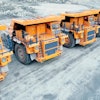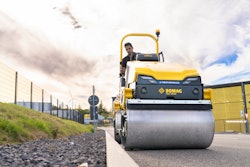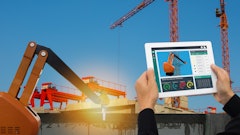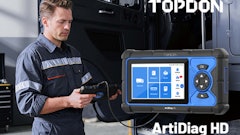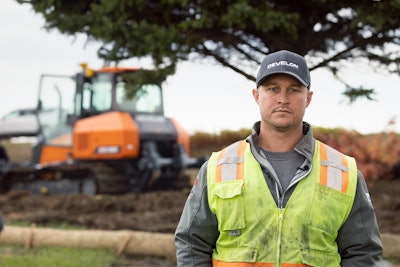
Contractors are leveraging cutting-edge technology, such as machine guidance and grade control systems for dozers to enhance their efficiency and productivity. Since their introduction to the construction industry in the 1990s, grade control systems for earthmoving equipment have increased in popularity. Significant advancements in global positioning system (GPS) and global navigation satellite system (GNSS) technology and computerized control systems have allowed manufacturers to integrate precise guidance systems in heavy construction equipment such as dozers.
Grade control systems for dozers play a crucial role today, especially considering the widespread shortage of skilled equipment operators. With features such as automation and real-time guidance, these systems offer a user-friendly interface that allows less-experienced operators to quickly master dozer operations.
This not only addresses the industry’s workforce challenges but also ensures that grading projects are executed with precision and efficiency. The integration of grade control systems is a practical solution, bridging the gap caused by the shortage of skilled personnel and contributing to the successful completion of construction projects.
Rasch Construction Adds Grade Control
Founded in 1947 by Ken Rasch, Rasch Construction originated as a vision to provide exceptional services in land clearing and lagoon-type projects. In the company’s early years, Ken personally operated a dozer to complete these projects. Over the decades, Rasch Construction has evolved into a successful construction firm based in Fort Dodge, Iowa.
Dalton Rasch, a third-generation family member, continues the legacy of excellence established by his grandfather. Although the equipment has changed dramatically, the family-owned business is still pushing and digging dirt. Using a variety of heavy and compact construction equipment, Rasch Construction performs excavation, grading and underground utility work in Iowa and has a branch in Arizona.
 A dozer with grade control technology simplifies manual staking and cut-fill operations for the workers on jobsites.DEVELON North America
A dozer with grade control technology simplifies manual staking and cut-fill operations for the workers on jobsites.DEVELON North America
Dalton mentioned that the primary grade control system technology that they use for the dozer is GPS. It simplifies manual staking and cut-fill operations for the workers on the company’s jobsites. He emphasized the importance of having the entire jobsite loaded on the GPS monitor in the machine, knowing the location of his operators on the site, and understanding their cut fills. According to him, this is the best approach to tackle a dirt job. The grade control system for the dozer has proven its value over time, paying for itself through increased efficiency and timely project completion.
The Trimble grade control version purchased by Rasch Construction does not require masts, improving the operator’s visibility of the dozer blade and the work area. Dalton and his operators also appreciate the placement of the GPS monitor below the machine’s LCD monitor in their dozer cab. According to Dalton, it’s conveniently located and doesn’t interfere with the operator's view out the front of the machine. Visibility is crucial, especially in those frequent situations where the company works on projects with limited space, such as grading for new streets or reconstruction.
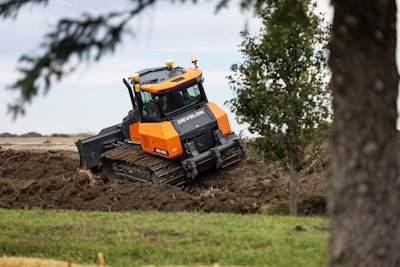 The grade control system does not require masts, improving the operator’s visibility of the dozer blade and the work area. The system operates from two globes that are mounted on top of the dozer cab.DEVELON North America
The grade control system does not require masts, improving the operator’s visibility of the dozer blade and the work area. The system operates from two globes that are mounted on top of the dozer cab.DEVELON North America
The following grade control system information is available on the second LCD screen:
- Actual grade
- Alarms and warnings
- Cut/fill information
- Cross-section views
- Design data
- Data logging
- Guidance lines
- Machine parameters
- Machine position
- Status indicators
Increased Efficiency
Maintaining a level ground when grading is critical to ensure the structural integrity and stability of buildings, roads, bridges and other structures. The 3D machine guidance and machine control system, like the one installed in the Rasch Construction dozer, reduces the need for operator inputs by up to 80%. This not only improves efficiency but also lessens operator fatigue because operating the dozer is less physically demanding than it has been in the past.
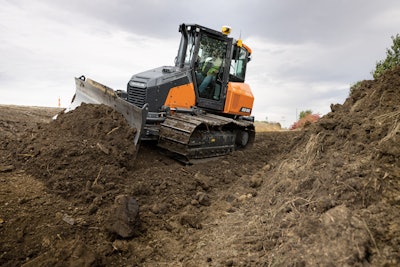 According to Dalton Rasch, this is the best approach to tackle a dirt job.DEVELON North America
According to Dalton Rasch, this is the best approach to tackle a dirt job.DEVELON North America
With the advanced 3D machine guidance and control system, the dozer operators can work efficiently without the need for frequent manual grade checks. This not only streamlines the grading process but also allows laborers, who may have been dedicated to manual grade checks in the past, to be reassigned to other tasks, maximizing overall jobsite productivity.
Reduced Rework
When contractors like Rasch Construction implement a grade control system for their dozers, it helps them make fewer mistakes when grading. This system continuously monitors the blade, makes small changes to the position of the dozer blade during grading and reduces rework.
If the dozer doesn’t grade the ground exactly as planned, the operator can realign the dozer blade to correct minor mistakes and make precise adjustments to reach the desired grade. This minimizes the rework and the impact on the project schedule.
Training Guidelines
When considering the purchase of a grade control system for a dozer, operators will need training on how to use the system. New operators and seasoned veterans must be familiar with the components of the 3D grade control system, including the hardware (for example, the sensors and receivers) and the software components. Speaking of software, operators should learn how to navigate and operate the software interface on the system’s display monitor.
Once the operator is comfortable with these items, the next step is training on how to load project-specific data into the system (like design plans, for example). Operators should also be trained on the calibration process to ensure the high accuracy of the system.
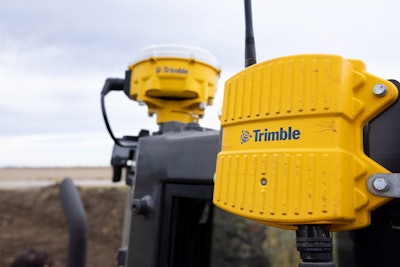 Dalton said that the system pays for itself over time because projects are completed more efficiently.DEVELON North America
Dalton said that the system pays for itself over time because projects are completed more efficiently.DEVELON North America
Last, operator training should include how to effectively control the dozer blade using the 3D grade control system. This helps them understand how the system adjusts the blade in response to grade variations.
Expected Costs
According to Dalton, the 3D grade control system for a dozer can be an expensive system to purchase, but he says it pays for itself over time because projects are completed more efficiently.
Before buying a system, consider the following key factors:
- Initial investment: This includes the costs associated with purchasing and installing the grade control system hardware and software.
- Operating costs: Consider expenses related to training dozer operators on how to use the grade control system effectively. Include ongoing expenses for system maintenance, software updates and technical support.
- Fuel efficiency: Track improved fuel efficiency that results from optimizing grading operations and minimizing unnecessary movements.
- Material savings: If the grade is more precise, a contractor may need less material for the jobsite. Operators may also reduce the need for rework and improve cost savings because of labor and materials.
To learn more about how to improve jobsite efficiency with grade control technology, explore the offerings from Trimble and similar companies. Contact a local construction equipment dealership for how to add this to equipment.


